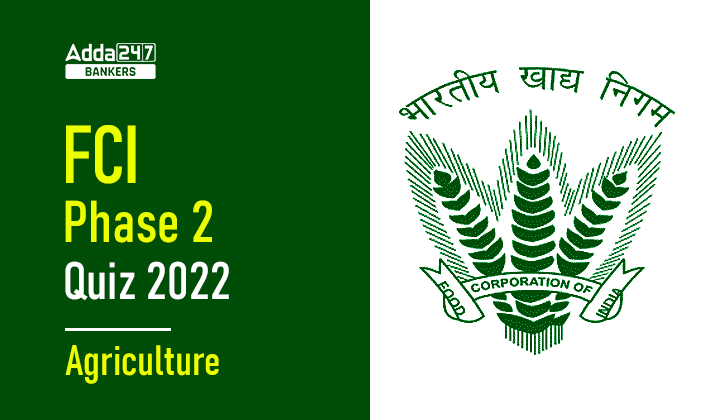Q1. Tristeza or quick decline is important disease related to____________
(a) Citrus
(b) Mango
(c) Banana
(d) grape
Q2. Insects that damage broken or already damaged grains is called______________
(a) External feeders
(b) Primary storage pests
(c) Secondary storage pests.
(d) All of these
Q3. Insects that damage broken or already damaged grains is called_________
(a) External feeders
(b) Primary storage pests
(c) Secondary storage pests.
(d) All of these
Q4. Which storage grain pest is External Feeders?
(a) Sitophilus oryzae
(b) Sitotroga cerealella
(c) Tribolium castaneum
(d) Lasioderma sericorne
Q5. Indian meal moth is________________
(a) Plodia interpunctella
(b) Corcyra cephalonica
(c) Trogoderma granarium
(d) None of these
Q6. Family of Khapra beetle is ___________
(a) Dermestidae
(b) Cucujidae
(c) Tenebrionidae
(d) Psocoptera
Q7. Presence of irregular holes of 1.5 mm diameter on grains of rice, sorghum, wheat, barley, maize in storage is due to attack by____________
(a) Rice weevil
(b) Lesser grain borer
(c) Plodia interpunctella
(d) None of these
Q8. Achatina Fulica Is a______
(a) Common Garden Snail
(b) Roman Snail
(c) Giant African snail
(d) None of These
Q9. Methyl Bromide Is Banned Due To_______
(a) Highly Toxic To vertebrata only
(b) Ozone Depletion
(c) Resistance in Insects
(d) All of These
Q10. ______ is Smallest Order Insect.
(a) Zoraptera
(b) Embioptera
(c) Siphunculata
(d) Siphonaptera
Solutions
S1. Ans (a)
Sol. The name “Tristeza” was suggested to describe the sad appearance of the diseased citrus trees. Kanzi lime and Nasnaran are indicator plants for CTV detection.
S2. Ans (c)
Sol. Those Insects that damage broken or already damaged grains is known as Secondary storage pests.
S3. Ans (c)
Sol. Those Insects that damage broken or already damaged grains is known as Secondary storage pests
S4. Ans (c)
Sol. Red flour beetle: Tribolium castaneum (Tenebrionidae: Coleoptera) Distribution and status: Worldwide Host range Wheat-flour, dry fruits, pulses and prepared cereal foods, such as cornflakes. Both the larvae and adults cause damage
S5. Ans (a)
Sol. Indian meal moth: Plodia interpunctella (Phycitidae: Lepidoptera) Distribution and status: The pest is worldwide. Host range It infests grains, meals, breakfast foods, soybean, dried fruits, nuts, s, dried roots etc.
S6. Ans (a)
Sol. Khapra beetle: Trogoderma granarium Family: (Dermestidae: Coleoptera). Distribution and status: Worldwide.
S7. Ans (a)
Sol. Presence of irregular holes of 1.5 mm diameter on grains of rice, sorghum, wheat, barley, maize in storage is due to attack by Rice weevil: Sitophilus oryzae.
S8. Ans (c)
Sol. The giant African land snail A. fulica is a fast-growing polyphagous plant pest that has been introduced from its native range in East Africa to many parts of the world as a commercial food source (for humans, fish and livestock) and as a novelty pet.
S9. Ans (b)
Sol. Methyl bromide depletes the ozone layer. India has banned the use of methyl bromide in domestic warehouses, phosphine is used in its place as a fumigant. This is because methyl bromide is not good for repeated use as it leaves residues in the grains.
S10. Ans (a)
Sol. Zoraptera constitute one of the smallest orders of Insecta, consisting of one family and about 30 named species.


 The Hindu Review October 2022: Download ...
The Hindu Review October 2022: Download ...
 List of The 7 Wonders of the World, Name...
List of The 7 Wonders of the World, Name...
 Last Minute Preparation Tips for IBPS RR...
Last Minute Preparation Tips for IBPS RR...


